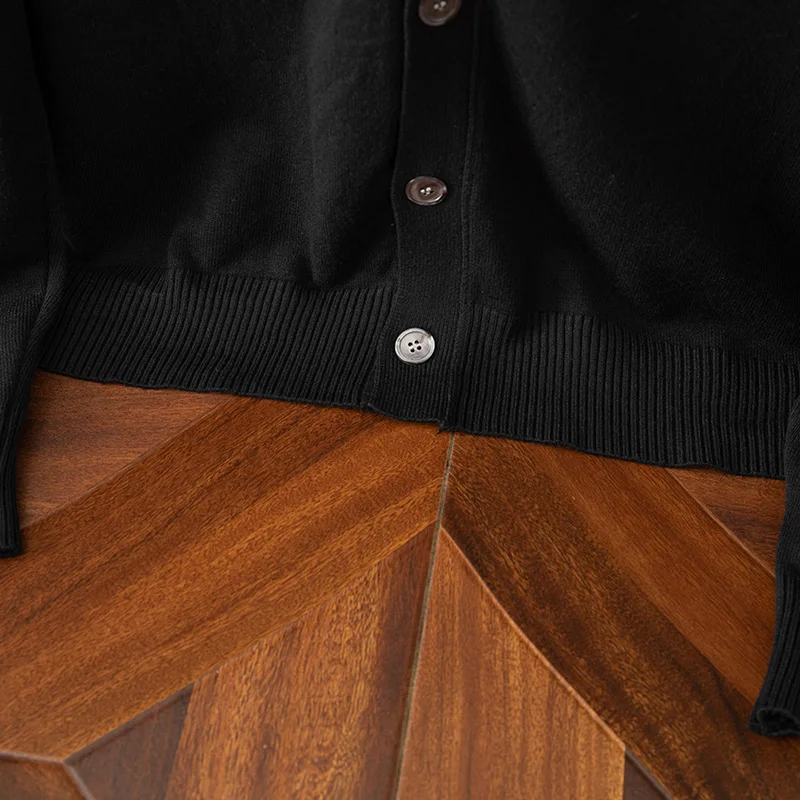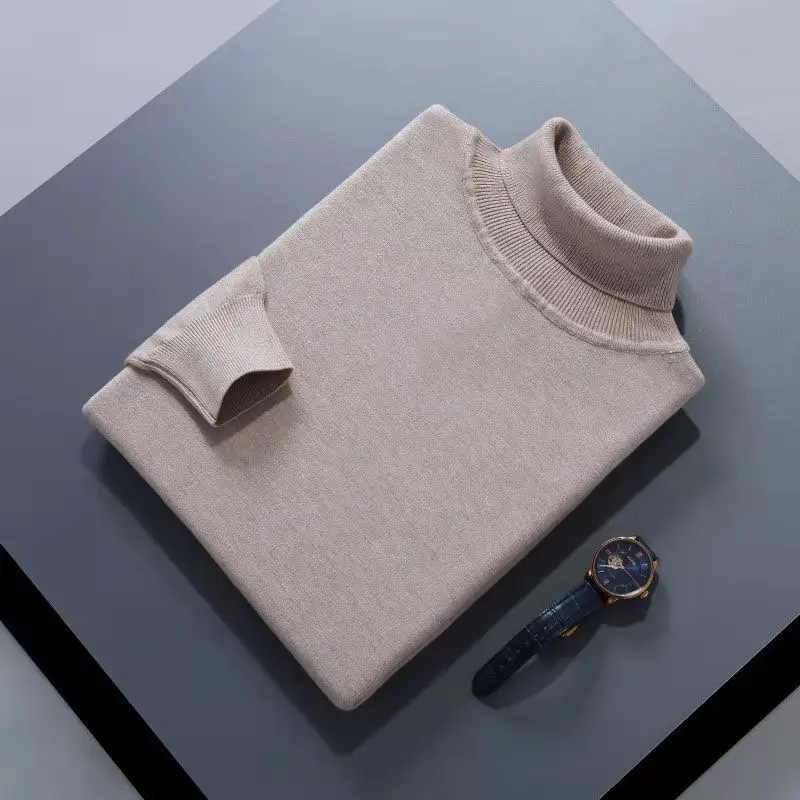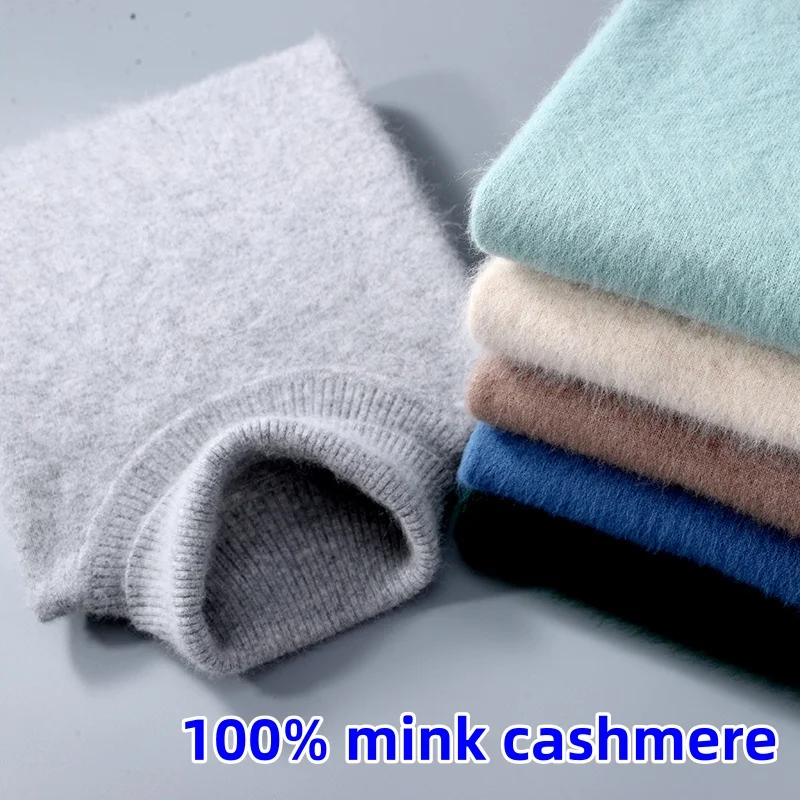Introduction: The Quest for Cashmere Warmth
Cashmere stands as one of nature’s most luxurious gifts—a premium natural fiber renowned for its exceptional warmth-to-weight ratio. When shopping for cashmere garments, you’ll often encounter two distinct varieties: chunky and fine cashmere. Though both offer the legendary softness and comfort cashmere is celebrated for, they deliver warmth in notably different ways.
Understanding these differences isn’t just about fashion preferences; it’s about making smart investments in garments that will serve you well for years to come. Each type offers unique benefits depending on your climate, activities, and personal comfort needs. The thickness of cashmere isn’t the only factor determining how warm it will keep you—contrary to what many assume, thicker doesn’t always translate to warmer.
Both chunky and fine cashmere provide remarkable insulation, but they do so through different constructions and wearing experiences. The relationship between styling tips for cashmere cardigans and their construction significantly impacts how effectively they keep you warm in various conditions.
In this guide, we’ll explore how fiber quality, knitting techniques, and practical considerations influence the warmth factor of different cashmere types, helping you make an informed choice for your wardrobe.
The Science of Cashmere Warmth: Why This Fiber Insulates So Well
Before comparing chunky and fine cashmere, let’s understand what makes all cashmere inherently warm, regardless of its thickness or construction method.
Natural Fiber Structure
Cashmere’s exceptional warmth begins with its microscopic structure. These fibers have a natural crimp or wave that creates tiny air pockets when woven or knitted together. These pockets trap body heat, providing outstanding insulation even in thin layers. Cashmere fibers typically measure just 14-19 microns in diameter—significantly finer than human hair (70-100 microns)—allowing for a dense arrangement of these heat-trapping pockets.
Fiber Length and Quality
The length of cashmere fibers plays a crucial role in creating consistent warmth. Longer fibers (typically 36mm or more in premium cashmere) can be spun into smoother, stronger yarns that maintain their insulating properties over time. This is why high-quality cashmere sweaters retain their warming properties longer than those made with shorter, lower-quality fibers.
Natural Breathability
What truly sets cashmere apart is its remarkable ability to both insulate and breathe. This natural fiber wicks moisture away from the body while maintaining warmth, preventing the clammy feeling often associated with synthetic materials. This moisture management creates a microclimate around your body that maintains consistent warmth without overheating.
This fundamental science underpins both chunky and fine cashmere garments. The difference lies in how these properties are enhanced or modified through different construction techniques.
Understanding Chunky Cashmere Construction
Chunky cashmere creates an immediately recognizable presence with its substantial feel and visible texture. Several specific construction elements define what makes cashmere “chunky”:
- Higher ply counts: Chunky cashmere typically uses 3-ply, 4-ply, or even 6-ply construction, meaning multiple strands of yarn twisted together to create thicker, more substantial threads.
- Lower gauge numbers: The gauge (typically 3-gauge to 7-gauge) indicates fewer, larger stitches per inch. A 5-gauge sweater has much larger, more visible stitches than a 12-gauge one.
- Substantial yarn diameter: The base yarns themselves are often thicker and more robust.
These construction elements significantly enhance warmth in several ways:
- The greater volume of material per square inch provides more insulating fiber.
- Larger stitches create bigger air pockets that trap more warm air.
- The overall increased loft and thickness create distance between your body and the external environment.
The resulting characteristics of chunky cashmere include:
- A substantial, weighty feel that provides immediate comfort in cold conditions
- Excellent structure and volume that maintains its shape
- Significant visual texture that adds dimension to outfits
- Superior durability against everyday wear
- Ideal performance in extremely cold weather and outdoor settings
For those exploring chunky cashmere styling options, the substantial nature of these garments makes them perfect statement pieces that combine luxury with practical warmth. The relationship between different cashmere types also helps explain why chunky varieties excel in certain environments while fine cashmere shines in others.
Understanding Fine Cashmere Construction

Fine cashmere represents a different approach to luxury, emphasizing elegance, lightness, and versatility. Its distinct construction includes:
- Lower ply counts: Fine cashmere typically utilizes 1-ply or 2-ply construction, with fewer strands twisted together for a more delicate yarn.
- Higher gauge numbers: Fine cashmere commonly features 12-gauge to 16-gauge construction, meaning more, smaller stitches create a denser, smoother fabric.
- Refined yarn diameter: The individual yarns themselves are thinner and more delicate.
While appearing less substantial than chunky alternatives, fine cashmere still provides remarkable warmth through:
- Tighter, denser fabric construction that creates a more efficient barrier against cold
- Smaller but more numerous air pockets that effectively trap body heat
- The inherent quality of premium cashmere fibers that insulate efficiently even in thin layers
These construction elements result in fine cashmere garments with distinct characteristics:
- A smooth, refined hand-feel with an almost silky touch
- Exceptional lightness that makes wearing multiple layers comfortable
- A fluid, elegant drape that follows the body’s lines
- Greater versatility for layering in various settings
- Perfect suitability for transitional weather, indoor environments, and formal occasions
The relationship between fine and heavy gauge cashmere highlights important distinctions in how these garments perform across different situations. Fine cashmere excels when elegant presentation matters as much as warmth, offering sophisticated comfort without unnecessary bulk.
Comparing Warmth: Chunky vs. Fine Cashmere
When directly comparing the warming abilities of chunky and fine cashmere, several key factors come into play:
| Feature | Chunky Cashmere | Fine Cashmere |
|---|---|---|
| Warmth Level | Significantly warmer due to more trapped air | Warm but lighter; excellent for layering |
| Ply Count | Higher (3-ply, 4-ply, 6-ply+) | Lower (1-ply, 2-ply) |
| Gauge | Lower (3-gauge to 7-gauge) | Higher (12-gauge to 16-gauge) |
| Thickness | Substantial | Delicate, thin |
| Weight | Heavier | Lighter |
| Insulation Style | Immediate warmth, bulkier insulation | Progressive warmth, efficient insulation |
| Best Temperature Range | Below 40°F (4°C) | 40-65°F (4-18°C) |
| Layering Potential | Limited, often worn as outer layer | Excellent, works well in multiple layers |
While oversized cashmere sweaters in chunky knits provide maximum insulation for harsh winter conditions, the warmth advantage isn’t as straightforward as simply “chunky is warmer.” The warming experience differs significantly between these styles:
Chunky cashmere delivers immediate, enveloping warmth. The moment you put it on, you feel cocooned in comfort—ideal for stepping out into bitter cold or lounging in a poorly heated space. The substantial weight and larger air pockets create a thermal barrier that works instantly.
Fine cashmere offers progressive, sophisticated warmth. Initially, it might feel less insulating, but as body heat activates its insulating properties, it creates an efficient thermal layer without bulk. This makes thin cashmere layers for transitional weather particularly effective when temperatures fluctuate.
The most practical approach often combines both types: fine cashmere as base or mid layers with chunky cashmere as an outer layer provides optimal insulation while maintaining freedom of movement. This combination harnesses the unique warming properties of each type for maximum comfort.
Choosing the Right Cashmere for Your Climate and Needs

Selecting between chunky and fine cashmere should ultimately depend on your specific climate and lifestyle needs:
Climate-Based Recommendations
Frigid winter climates (below freezing): Chunky cashmere provides the substantial protection needed against harsh elements. Its immediate warmth and denser construction create an effective barrier against severe cold.
Mild winters (40-60°F / 4-15°C): Fine cashmere offers the right balance of warmth without overheating. Its adaptability to temperature fluctuations makes it perfect for areas with variable conditions.
Transitional seasons: Layering options become crucial. Fine cashmere excels here, as multiple thin layers can be added or removed as temperatures change throughout the day. Understanding effective layering with cashmere cardigans helps maximize versatility.
Lifestyle Considerations
Formal settings: Fine cashmere creates a refined silhouette appropriate for professional and formal environments while still providing warmth.
Casual comfort: Chunky cashmere offers cozy, relaxed style perfect for weekend wear and casual outings.
Active vs. sedentary: Consider your typical activity level. More movement generates body heat, potentially making fine cashmere sufficient even in colder conditions.
Cashmere Wrap Sweaters, Women's Cashmere Pullovers
$75.89 Select options This product has multiple variants. The options may be chosen on the product pageCashmere Cable Knit Sweaters, Women's Cashmere Pullovers
Price range: $111.82 through $112.93 Select options This product has multiple variants. The options may be chosen on the product pageCropped Cashmere Sweaters, Women's Cashmere Pullovers
$155.77 Select options This product has multiple variants. The options may be chosen on the product pageOversized Cashmere Sweaters, Plus Size Cashmere Sweaters, Women's V-Neck Cashmere Sweaters
$136.87 Select options This product has multiple variants. The options may be chosen on the product page- Price range: $108.11 through $130.03 Select options This product has multiple variants. The options may be chosen on the product page
Striped Cashmere Sweaters, Women's Cashmere Pullovers
$139.68 Select options This product has multiple variants. The options may be chosen on the product page
When shopping for cold-weather options, cashmere turtlenecks provide excellent neck protection in either construction, though chunky versions offer maximum insulation for exposed areas. The best approach for many wardrobes includes both types, allowing flexibility across different conditions and settings.
Beyond Construction: Quality Factors That Influence Cashmere Warmth
While the chunky versus fine distinction significantly impacts warmth, several quality factors affect insulation regardless of construction:
Fiber Quality Fundamentals
Micron count: The diameter of individual cashmere fibers (measured in microns) directly influences warmth. Premium cashmere with fibers under 16 microns provides superior insulation because finer fibers create more efficient air pockets. Lower-quality cashmere with thicker fibers (19+ microns) offers less effective insulation regardless of construction.
Fiber length: Longer fibers (36mm+) create stronger, more consistent yarns that maintain their insulating loft over time. Shorter fibers may feel warm initially but quickly compress and lose their insulating properties.
Grade classification: Grade A cashmere (the highest quality) inherently provides better warmth due to its finer fibers and superior processing.
Garment Fit and Warmth
The relationship between fit and thermal efficiency is often overlooked:
- Slightly snug (not tight) fits enhance warmth by reducing cold air circulation
- Extremely loose fits may allow warm air to escape unless properly sealed at openings
- Strategic sizing choices should match your intended layering plans
Processing and Treatments
Different finishing techniques significantly impact insulating properties. Brushed cashmere sweaters undergo a specialized process that raises fibers to create additional air pockets, enhancing warmth without additional weight. This demonstrates how treatment methods can modify the basic warmth properties of either chunky or fine cashmere.
Caring for Cashmere to Maintain Its Warming Properties
Proper care is essential for preserving the warming abilities of cashmere garments:
Washing considerations: Hand-washing with gentle cashmere shampoo helps maintain fiber structure. Harsh detergents and machine washing can compress fibers, reducing their ability to trap air effectively.
Drying techniques: Always dry cashmere flat to maintain shape and loft. Never hang wet cashmere, as it stretches the fibers and permanently damages their insulating structure.
Storage practices: Store clean cashmere folded with acid-free tissue paper, never hanging for long periods. Avoid compression in crowded drawers, which flattens air pockets.
The proper care techniques for cashmere sweaters differ slightly between chunky and fine varieties:
Chunky cashmere: Requires more thorough (but gentler) rinsing to ensure soap residue is removed from thicker areas. Takes longer to dry completely.
Fine cashmere: More susceptible to stretching during washing; requires extra care when handling wet. Typically dries more quickly.
Addressing pilling—those small balls of fiber that form on the surface—is particularly important for maintaining warmth. Pills reduce insulating efficiency by disrupting the smooth surface that traps air. Gently remove them with a cashmere comb rather than pulling, which can damage surrounding fibers.
Frequently Asked Questions About Cashmere Warmth

Is thicker cashmere always warmer?
Not necessarily. While chunky cashmere generally provides more immediate warmth, high-quality fine cashmere can be remarkably warm through efficient insulation. Fiber quality often matters more than thickness alone.
Does higher ply always mean better quality and warmth?
Higher ply indicates more yarn strands twisted together, typically creating warmer garments. However, quality depends more on the fiber characteristics than ply count alone. Premium 2-ply cashmere can outperform lower-quality 4-ply in terms of insulation and longevity.
Can 2-ply fine cashmere be warm enough for winter?
Absolutely. High-quality 2-ply cashmere from premium fibers (under 16 microns) provides excellent warmth for moderate winter conditions. For severe cold, layering fine cashmere or choosing chunky options may be preferable.
How does cashmere compare to wool in terms of warmth?
Cashmere provides up to eight times more insulation than regular wool of the same weight due to its finer fibers and superior air-trapping structure. This makes even fine cashmere remarkably warm despite its lightweight feel.
Which is more important for warmth: ply count or gauge?
Both contribute differently. Ply count affects yarn thickness and density, while gauge determines how tightly those yarns are knitted. For maximum warmth, a high-ply yarn in a medium-to-low gauge construction typically provides optimal insulation.
How can I tell if my cashmere is high enough quality to provide good warmth?
Quality cashmere should feel incredibly soft (not scratchy), have minimal pilling after gentle wear, and provide noticeable warmth almost immediately. Premium cashmere recovers its shape well after being gently stretched.
Does the color of cashmere affect its warmth?
Color has minimal impact on cashmere’s insulating properties. The fiber structure, not the dye, determines warmth. Choose colors based on personal preference rather than warmth considerations.
How many seasons can I expect my cashmere to maintain its warming properties?
With proper care, high-quality cashmere should maintain its warming abilities for many years. Premium garments from Estate Cloth are designed to provide consistent warmth through proper construction and fiber selection, ensuring they remain valuable wardrobe investments for the long term.







